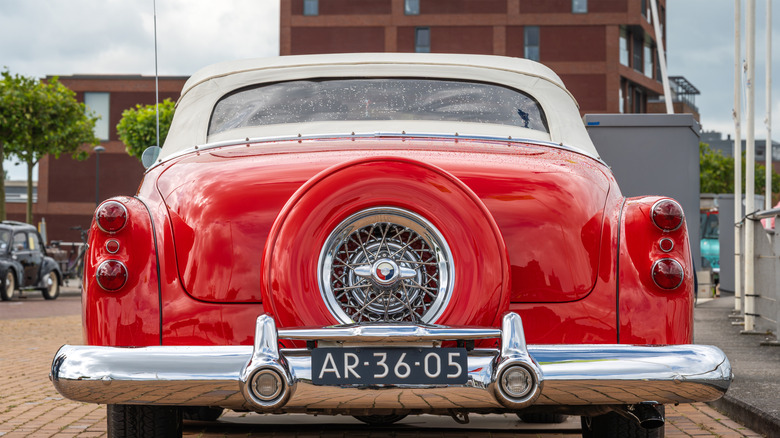Why Did Old Cars Have Rubber Strips Hanging From The Back? Here's What They Were For
The best part about owning a car is that you can install many third-party accessories that you think will be handy while riding in your vehicle. Phone mounts, air purifiers, and tire inflators are some of the important gadgets that you will find car owners installing these days on their rides. But if you search for vintage automobiles, especially those produced during the 1970s, you will find one common accessory attached to most — a rubber strip at their rear bumper.
Interestingly, these rubber strips were not only exclusive to personal cars. They were also installed on taxis, delivery vans, and other public service vehicles as well. Unlike most modern accessories, the strips weren't there for aesthetic or convenience reasons, they actually served a very important purpose. The strips were popularly known as anti-static straps, and they were used to discharge static electricity.
Have you ever experienced a small electric shock while touching the doorknob in your home? This happens due to static electricity, which is formed when two objects rub against each other. When your vehicle starts moving on the road, its tires and the road create friction, and that friction results in the formation of static electricity, which gets stored in your vehicle's body. Now, when you stop your car and someone touches it, there's a possibility that they'll experience a small electric shock. This is where anti-static straps came in.
Why did old cars have rubber strips hanging from the back?
To discharge the static electricity from the vehicle, drivers in those days came up with the idea to hang the rubber strips, aka anti-static straps, at the back of the vehicle. These strips had conductive material embedded in them. While one end of the strip was attached to the rear bumper, the other end, which was made of rubber, remained in contact with the ground, providing a path for the formed static electricity to dispatch back onto the road.
Eliminating the static electricity from the vehicle was the scientific reason behind installing the rubber strips; some also believed that they prevented motion sickness. You'll find people both against and in favor of this belief. Unfortunately, there is no proof of whether this was simply another example of the placebo effect or whether the strips actually helped in reducing motion sickness. If you're wondering why you don't see the strips in modern cars, it's because vehicles these days come with better grounding systems. Also, new steel-belted radial tires replace the function of the road strap through the steel belt, which reduces the chance of static energy formation.

